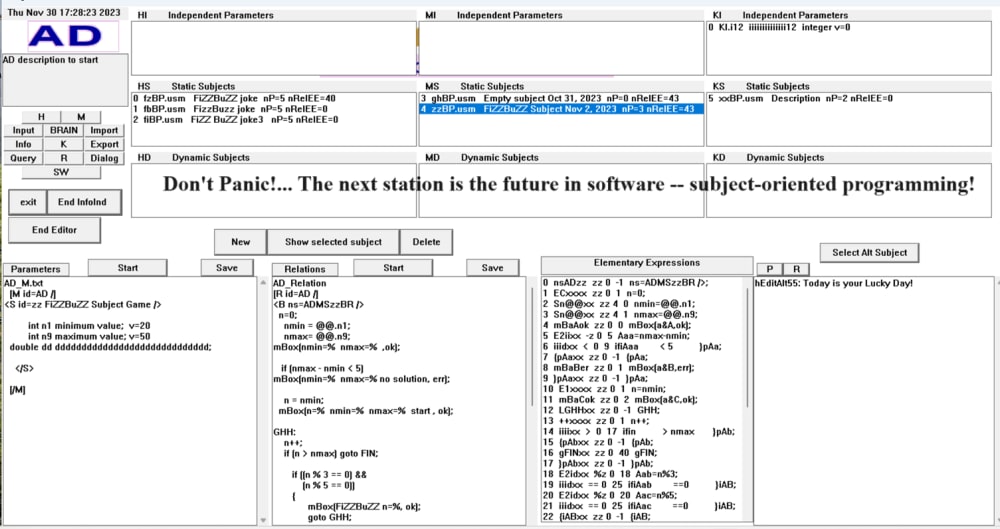Universal Software Model -- the Future in Software!
100 programming languages? Why not only one?
I built it (60% ready) as a programming language, but it can be viewed as an Operating System for managing any informational problem.
The entire system is based on only 3 main concepts:
- Parameters of the problems.
- Subjects (static and dynamic) as special lists of parameters.
- Informational Individuals as a Matrix of Types of parameters and subjects.
The Matrix of Types is a unique, universal system for representing parameters of the problem on three levels of complexity (Independent parameters, Static Subjects and Dynamic Subjects) and three context of work (H, M, K). The entire management procedure is a part of the usm language. The user (analyst) is deciding the details about parameters, such as type, short name, a description (optional for independent parameters), and the place into the matrix of types.
In addition, a subject can be viewed as an informational cell, and an Informational Individual is becoming a chain of informational cells (software DNA).
There are here two big changes of paradigms in software world:
- From a very, very complicated Object-Oriented Programming (OOP) to a simple and natural Subject-Oriented Programming!
- From the Main() function to the Brain() function! Any Informational Individual is starting with the Brain() function.
Too much human effort is stuck on the current software model. More real problems are waiting to be solved. You would be interested in Subject-Oriented Programming Fundamentals (Parameters, Subjects and Informational Individuals).
The Informational Reality is about Parameters and Subjects, much more than software abstractions, objects, or classifications.
More simple is not possible!
Video
Like this entry?
-
About the Entrant
- Name:Gheorghe Matei
- Type of entry:individual
- Patent status:none


